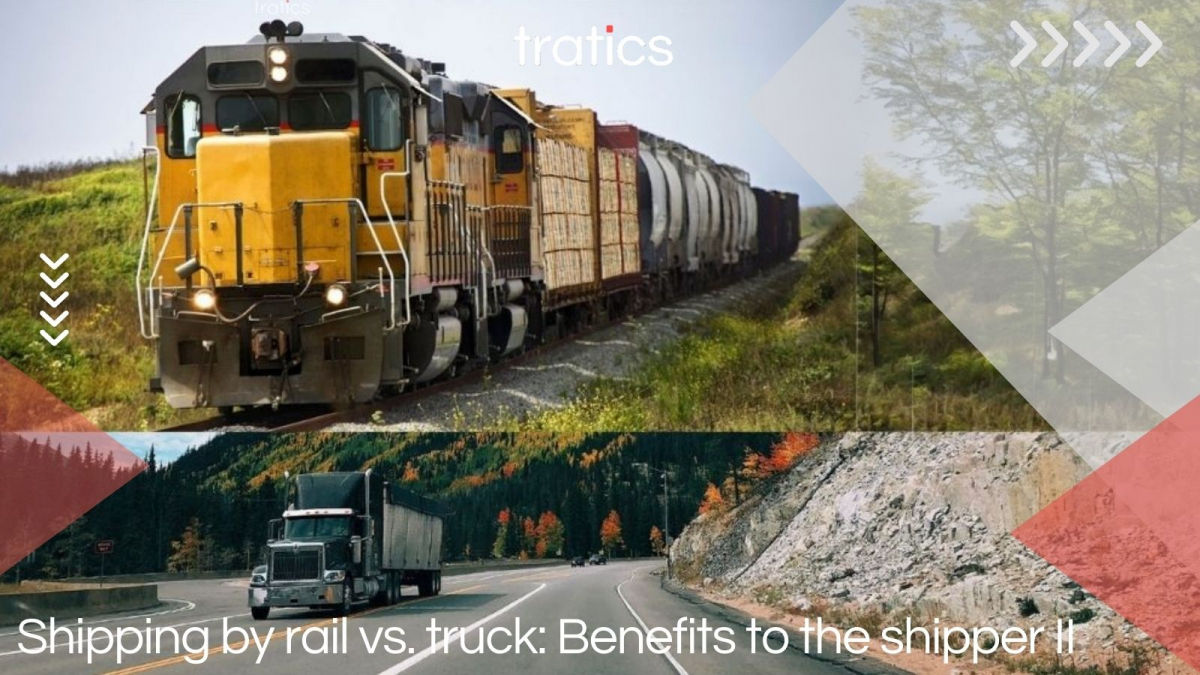In the second part of our Rail vs Truck discussion, we explore additional benefits of using rail to move your goods. In our first post on this topic, which you can find here, we discussed the following benefits of rail vs truck: lower cost, higher capacity, environmental advantages, and higher safety record.
Here are some additional benefits that rail provides shippers:
You can use railcars as a "mobile warehouse" or as storage in transit.
One of the major benefits of shipping by rail is the ability to use railcars as a "mobile warehouse." With a large capacity for transporting freight, up to 4 times higher capacity than trucks, railcars offer shippers the ability to store goods in transit. This means that shippers can load and unload their goods when it is convenient for them, rather than being confined to the tight schedules of trucking. By using railcar arrival ETAs and the railroads’ longer transit times, savvy shippers can make use of railcars as temporary storage vehicles. Forward storage yards, a service offered by shortline railroads and others, can be used to further extend the use of railcars as storage on wheels.
Rail makes it easy to move large volumes of goods.
Few shippers want to deal with the hassle of hundreds of trucks moving in and out daily at their plants. Shipping by rail offers shippers the ability to move large volumes of goods efficiently. This makes it an ideal choice for shippers who have the capacity to ship large quantities of goods and commodities. With the ability to ship unit trains of 100+ railcars, or the possibility of moving hundreds of containers at once, trains can replace hundreds of trucks. This makes rail transportation one of the most efficient modes of transportation.
By using rail, you help reduce damage to the interstate highway system.
Trucks cause significant damage to the interstate highway system. The weight of trucks can take a toll on roads, bridges, and other infrastructure, leading to increased maintenance costs and reduced safety for other drivers on the road. Shipping by rail, on the other hand, reduces the number of trucks on the road, thus reducing the amount of damage to the highway system and improving road safety.
And help alleviate truck driver shortage issues.
The truck driver shortage problem seems to have become a perennial issue, leading to delayed deliveries and increased costs for shippers. Shipping by rail, on the other hand, is typically a reliable source of capacity. This is especially beneficial during periods of tight capacity in the trucking market, providing shippers with a source of capacity when they need it most.
Shipping freight by rail has many advantages over shipping by truck but finding the right rates and routes can be a challenge. This is where Tratics comes in. Tratics software provides functionality to automatically find all applicable Rule 11 rates. Our powerful rate search algorithm compares all possible routes, junctions, and rates, making it easy for shippers to find the most cost-effective or quickest option for their shipments. Whether you're looking to move substantial tonnages efficiently or use railcars as a "mobile warehouse" or storage in transit, Tratics can help you take advantage of the benefits of shipping by rail.


